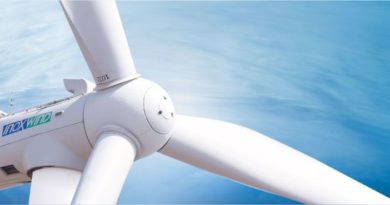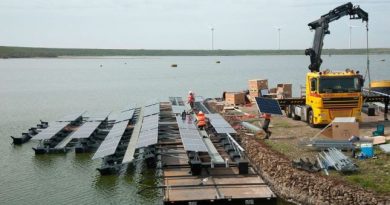EIA Report: Wind Will Dominate US New Power Generation in 2019, as Coal, Nuclear retirements loom

According to a new report from the U.S. Energy Information Administration (EIA), new electric generating capacity this year will come primarily from wind, solar and natural gas.
EIA’s latest inventory of electric generators, 23.7 gigawatts (GW) of new capacity additions and 8.3 GW of capacity retirements are expected for the U.S. electric power sector in 2019. The utility-scale capacity additions consist primarily of wind (46%), natural gas (34%), and solar photovoltaics (18%), with the remaining 2% consisting primarily of other renewables and battery storage capacity.
 Wind: A total of 10.9 GW of wind capacity is currently scheduled to come online in 2019. Most of the capacity will not come online until the end of the year, which is typical for renewable capacity. Three states—Texas, Iowa, and Illinois—will be home to more than half of the 2019 planned wind capacity additions.
Wind: A total of 10.9 GW of wind capacity is currently scheduled to come online in 2019. Most of the capacity will not come online until the end of the year, which is typical for renewable capacity. Three states—Texas, Iowa, and Illinois—will be home to more than half of the 2019 planned wind capacity additions.
Natural gas: Planned natural gas capacity additions are primarily in the form of combined-cycle plants (6.1 GW) and combustion-turbine plants (1.4 GW). Most of the natural gas capacity is scheduled to be online by June 2019 in preparation for high summer demand. Of the planned natural gas capacity additions, 60% will occur in Pennsylvania, Florida, and Louisiana.
Solar photovoltaics: Nearly half of the 4.3 GW of utility-scale electric power sector solar photovoltaic (PV) capacity additions are located in three states: Texas, California, and North Carolina. In addition to the electric power sector, other sectors, such as the residential and commercial sectors, also install solar PV, e.g., distributed PV or rooftop systems. In addition to utility-scale capacity, EIA’s Short-Term Energy Outlook expects an additional 3.9 GW of small-scale solar PV capacity to enter service by the end of 2019.

Scheduled capacity retirements for 2019 primarily consist of coal (53%), natural gas (27%), and nuclear (18%), with a single hydroelectric plant in the state of Washington and other smaller renewable and petroleum capacity accounting for the remaining 2%.
Coal: Most of the coal retirements are scheduled to occur at the end of 2019. Half of the planned retirement capacity for coal is at a single plant, Navajo, located in Arizona that first came online in the 1970s. The 4.5 GW of coal-fired capacity expected to retire in 2019 is relatively small compared with the estimated 13.7 GW that retired in 2018, which was the second-highest amount of coal capacity retired in a year.
Natural gas: The scheduled natural gas retirements (2.2 GW) consist mostly (2.0 GW) of steam turbine plants. The natural gas steam turbine plants that are scheduled to retire are all older units that came online in the 1950s or 1960s. Most of the retiring natural gas steam turbine capacity (1.6 GW) is located in California.
Nuclear: Two nuclear plants totaling 1.5 GW are currently scheduled to retire in 2019. The Pilgrim Nuclear Power Station, located in Massachusetts, is scheduled to retire in May, and the remaining unit at the Three Mile Island Power Station, located in Pennsylvania, is scheduled to retire in September.




